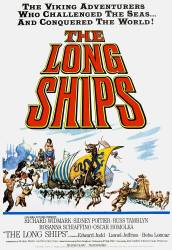Factual error: At the end, Rolfe suggests to King Harald that they seek "the three crowns of the Saxon kings." But this lost treasure legend is a modern invention. In 1925 M R James wrote "A Warning To The Curious", which says that the Anglo-Saxon kings of East Anglia buried three crowns near the English coast. Somebody who finds one of these meets a mysterious, sinister death. The legend of the three crowns of the Saxon kings has since appeared in many books about English folklore. But there is no record of this story before 1925 and it is now believed that M R James invented it. Thus the story of the three crowns would not have been known to the Vikings.
Suggested correction: First of all, you state "it is now believed that M R James invented it." So it is not known for certain if he did or not? And if it is doubted now, what about 1964? Something doesn't become a mistake if future discoveries contradict what was known at the time. And finally, whether it was a real legend or not is irrelevant. It is a legend in the world of the movie, just like the legend of the golden bell. If anything this should be listed as trivia.
Well observed, Sir! I concede that you make very valid points. In hindsight, I should not have submitted this as a factual error. I should have worded it as a question. I should have asked if Rolfe's closing lines about "the three crowns of the Saxon kings" alluded, directly or indirectly, to the M R James ghost story "A Warning To The Curious." Maybe it does, maybe it doesn't. But I will have to agree that, if the golden bell is a real object in the cinematic world of "The Long Ships", then the legend of the three crowns of the Saxon kings can be an equally real legend in the cinematic world of this film. I am fully aware that films are not real life and that the internal logic of a film need not follow the logic of real life.
Factual error: This film is about the search for a great golden bell, 'The Mother Of All Voices' that rings incredibly loudly. A bell has a free-standing metal 'clapper' inside, the bell rings when it is moved to make the clapper hit the sides. When they find 'The Mother Of All Voices' it has no clapper, so how can it ring? (The ringing was obviously dubbed in after the film was made). Bells are made of a strong, hardwearing alloy of tin and lead, which reverberates when hit to make a ringing noise. Gold is among the softest of metals. A bell made of gold would never ring, when it was struck the gold would just bend and twist. After its discovery the bell falls off a high cliff, but it is not even dented, in reality anything made of gold would be knocked completely out of shape by such a fall.
Factual error: Rolfe is leading the Vikings on a quest to find a giant golden bell, 'The Mother Of All Voices'. After many exploits the Vikings find a building with a large dome on it: Rolfe excitedly enters it, but all he finds is one small metal bell, hanging from a rope. In his anger he grabs the small bell and smashes it against the wall. This causes a horrible reverberation, and he realises that the dome on top of the building is 'The Mother Of All Voices' and it has been disguised by being covered with mortar to make it look like a building. The Vikings then remove the mortar to find the bell beneath. But a bell will only reverberate if it is allowed to hang free: the noise is made by the vibrations as the bell moves. If a bell is locked in position and it is then struck it might make a single clang, but it would not reverberate constantly.
Continuity mistake: During the harem fracas, the Eunuch dressed in a blue/white linen costume dives into a pool of water, soaking wet, next scene, he pops up out of a vase/pot completely dry.
Continuity mistake: When the "funeral ship" is beached, its clipper bow is revealed, yet when Orm and Rolfe are in the forepeak with the king's daughter there is an abundance of room, including eight or more feet of headroom.





